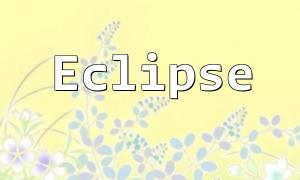In modern application development, Java and PHP are two very popular programming languages. Each has its unique advantages and is often used together to create more powerful and flexible applications. In many cases, Java needs to access PHP files, especially when handling data and user requests. This article will delve into several methods for accessing PHP files in Java.
The basic principle behind Java accessing PHP files is sending requests via the HTTP protocol and receiving the response from the PHP file. This functionality can easily be achieved using Java's networking libraries, such as HttpURLConnection or Apache HttpClient.
HttpURLConnection is a class provided in Java's standard library that is used to send HTTP requests and receive responses. Below is an example showing how to use HttpURLConnection to access PHP files:
import java.io.BufferedReader;
import java.io.InputStreamReader;
import java.net.HttpURLConnection;
import java.net.URL;
public class JavaPHPExample {
public static void main(String[] args) {
try {
// Define the URL of the PHP file
String url = "http://example.com/script.php";
URL obj = new URL(url);
HttpURLConnection connection = (HttpURLConnection) obj.openConnection();
// Send a GET request
connection.setRequestMethod("GET");
// Read the response
int responseCode = connection.getResponseCode();
BufferedReader in = new BufferedReader(new InputStreamReader(connection.getInputStream()));
String inputLine;
StringBuffer response = new StringBuffer();
while ((inputLine = in.readLine()) != null) {
response.append(inputLine);
}
in.close();
// Print the result
System.out.println("Response Code: " + responseCode);
System.out.println("Response: " + response.toString());
} catch (Exception e) {
e.printStackTrace();
}
}
}If more advanced HTTP client functionality is needed, the Apache HttpClient library can be used. This library offers more options and features, making it suitable for handling complex requests and responses. Below is an example showing how to access PHP files using Apache HttpClient:
import org.apache.http.HttpResponse;
import org.apache.http.client.methods.HttpGet;
import org.apache.http.impl.client.CloseableHttpClient;
import org.apache.http.impl.client.HttpClients;
public class ApacheHttpClientExample {
public static void main(String[] args) {
try (CloseableHttpClient httpClient = HttpClients.createDefault()) {
// Define the URL of the PHP file
String url = "http://example.com/script.php";
HttpGet request = new HttpGet(url);
// Send the request
HttpResponse response = httpClient.execute(request);
System.out.println("Response Code: " + response.getStatusLine().getStatusCode());
} catch (Exception e) {
e.printStackTrace();
}
}
}This article discussed how Java can access PHP files using both HttpURLConnection and Apache HttpClient. These methods allow Java applications to easily communicate with PHP backends. In practical applications, the choice of which method to use should depend on the complexity and requirements of the project. Mastering these techniques will help improve the maintainability and performance of your projects.








